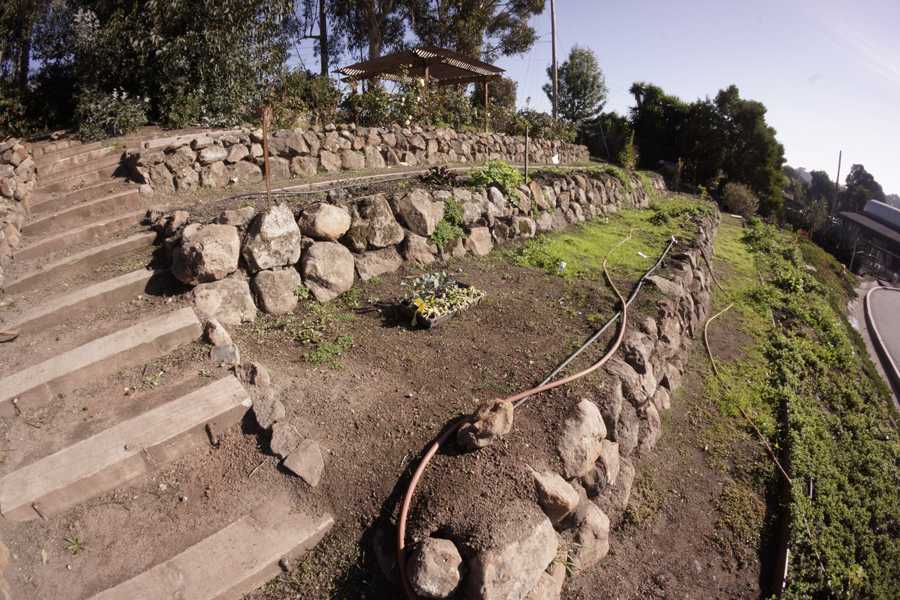Organic garden saves money
Dec 10, 2014
A lot of culinary establishments are leaning toward starting their own organic garden, and the culinary arts department’s organic garden on campus is finally coming together.
Culinary arts students maintain the garden, which is northeast of the culinary arts department in the Applied Arts Building.
In 2008 the Greenhouse behind the Biology Building burned down, so the garden only received half of $45,000 worth of insurance money. The culinary arts students built the foundation of the garden, but Buildings and Grounds Manager Bruce King helped get Howell Landscaping to complete the final touches on the garden.
King said he gives high praise for culinary arts department Chairperson Nader Sharkes for maintaining the garden on a regular basis.
“The garden started about four or five years ago, and we just helped set up the bench and gazebo. But the culinary students did most of the other work,” King said.
Sharkes said the organic garden is usually maintained by the first semester students enrolled in Culinary Arts 120, and is also maintained in part by the Bay Area Rescue Mission, which gives the students instruction on how to run a garden.
The garden grows different types of olives, kale, mint, carrots and potatoes. It gives students learning experiences on how to run a garden, and it also helps in the student’s future in the culinary arts, Sharkes said.
Culinary arts major Lauren Patrick said, “It is necessary to have basic garden skills for any culinary profession. It directly ties into our profession learning how to pick the freshest herbs and vegetables, so when I open a restaurant my menu will always have the freshest ingredients.”
The plants that grow from the garden are used for ingredients in the food that is distributed from the Three Seasons Restaurant, The Switch and the Express Café. They also grow an assortment of flowers in the garden, and those get used for embellishments in the dining hall of Three Seasons.
Organic gardens are becoming popular for every culinary chef who has space to grow near his or her restaurant, Sharkes said.
“It saves us funds by allowing us to plant and use vegetables in the garden,” He said. “We also use the roses for decoration in our dining room.”
The department also receives plant seed donations from Sunnyside Farms in Richmond, he said.
It took two semesters for the students to build the terrain of the garden, including the tiles and stones used to layout walkways. Howell Landscape finished the entire dirt layout for planting.
First semester culinary students who work on the garden for class credit do so every day from 11 a.m. to 2 p.m.


